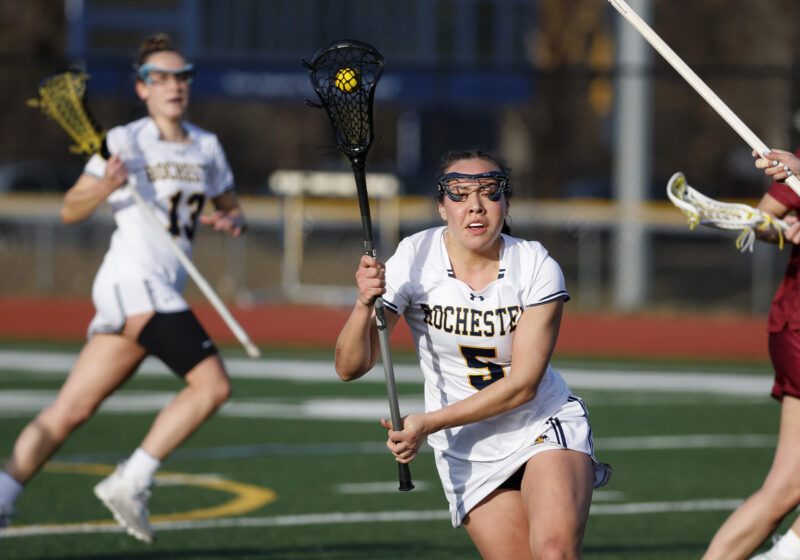Formed in early 2003, the Rochester Trolley and Rail Corporation has some big plans to revitalize the Greater Rochester area. They seek to create a leisure-oriented trolley system throughout the city of Rochester. Some of the initial planned routes include trolleys from area colleges, including UR and Rochester Institute of Technology, into downtown Rochester. The project is being headed by President and CEO Christopher Burns, a UR alumnus, who also received his MBA from Simon.
“Having gone to UR I have a first hand perspective,” Burns said. “For students who are new to the area, or just don’t have a car, it is difficult to go and explore – unless you know about something, you are likely to miss out on a lot of uniquely Rochester things. The trolley will give students an attractive and convenient way to get around the community.”
The company feels that Rochester’s current public transportation options are not well-suited to recreation to the point where it basically goes unused. Rochester currently possesses a great deal of unused railways as they once served as a primary piece of Rochester’s commerce.
A comprehensive trolley system would help to tie the city into its past while creating jobs and increasing tourism in our struggling economy. The proposed system would likely bring not only jobs in the industry, but also a boom in Rochester tourist traffic and related jobs.
Other proposed initial routes take visitors from the airport to downtown Rochester and from the suburbs to downtown. Overall, the area could expect a significant financial boom with a trolley system in place, according to the Burns’ company.
The project is expected to move in phases starting with a historic line from Charlotte to downtown. To accomplish this, the company will have to work with the U.S. Coast Guard to acquire the rights to the Hojack swing bridge that currently faces demolition. The bridge has been around since 1905 and crosses the Genesee River near Lake Ontario. It currently goes unused and is headed for demolition, but with talk of using the bridge again, its destruction is currently on delay as groups attempt to make it a city landmark.
From there, the corporation would work with Irondequoit and the Regional Trail Organization to develop a shared-use approach and combine a recreational trail with a trolley line.
The next phase would be to create lines from area colleges to downtown Rochester. The college lines would be followed by a downtown loop trolley which would link riders to various destinations.
The project would finish with lines from the suburbs of Rochester to downtown and potentially lines from Rochester to the Finger Lakes and other outlying towns.
There are already existing rail lines running through UR’s campus, which remain unused.
Burns said that it might be possible to tie in UR to the initially planned line out of Charlotte, which
See TROLLEY, Page 7
is for the most part already built.
Burns hopes that students will support the project.
“Right now we are in the ‘awareness’ phase of planning,” Burns said. “We want to get students excited about this project and tell the administration that they want it.”
The actual building of the trolley system is still very much in a planning phase, as the corporation looks to marketing companies to perform a comprehensive analysis on how the system would work out financially as well as estimated usage to prove its validity to politicians and legislators.
“We have spoken with local government officials and the staffs of congresspeople,” Burns said. “There is interest in the idea, we just need to prove its feasibility so that we can get their support.”
Burns emphasized that the Rochester Trolley and Rail Corporation would not be looking to make money and would hope to at best break even. While pricing is still very much in the future, estimates for costs to students would be roughly $30 for a monthly pass and various discounted rates for single use and weekend passes – which he estimated to be roughly $2 and $5 respectively.
The trolley would run most likely in the evening from around 4 p.m. to 1 a.m. since it is mainly intended for leisure. It would only run during the day on Saturday and Sunday, though he emphasized that if there is demand for weekday trolleys, then it could easily be changed.
Burns met with UR officials earlier in the year, but did not find a high grade of enthusiasm. While they were not completely opposed, they did not like the idea of a wire running across intercampus drive.
“The bottom line is that we are seeking to make an easy, attractive way to enhance the Rochester experience and the trolley should do just that,” Burns said.
Burns encourages students to contact local officials and school administrators and tell them to support the trolley system for Rochester. For more information visit, www.rochestertrolleyrail.com.

